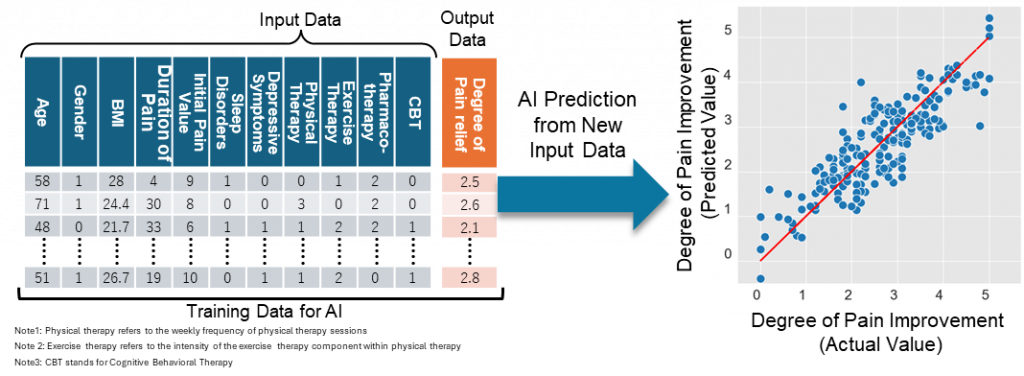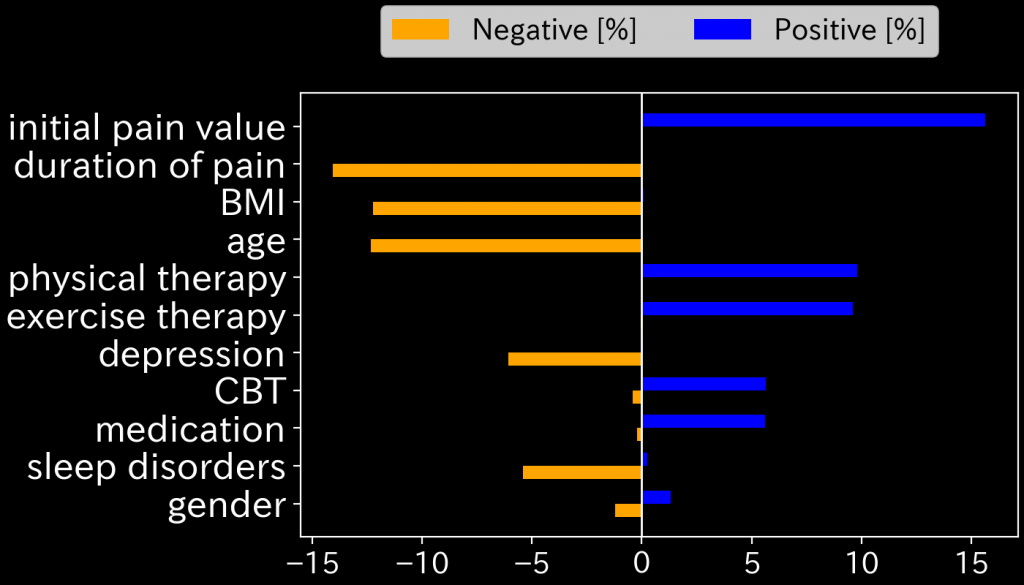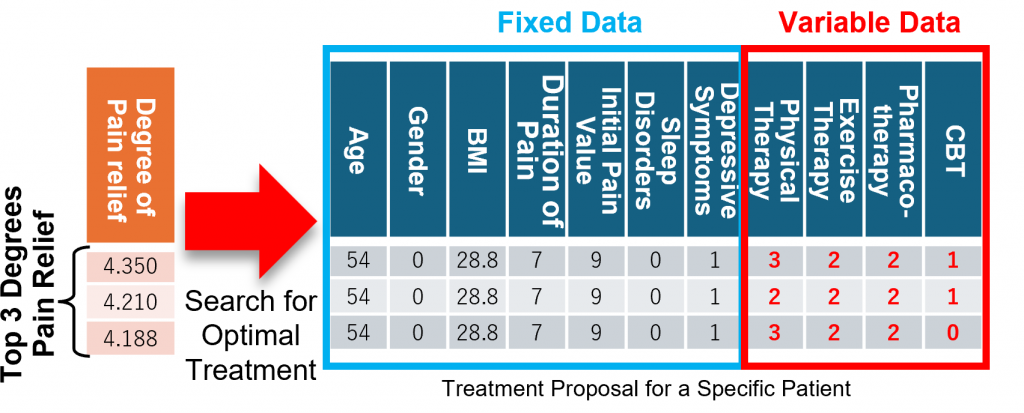Tailor-made Medical Care for Patients with Chronic Low Back Pain Using Multi-Sigma®

Multi-Sigma® learns from data on patients with chronic low back pain to propose the most suitable treatment plan for each patient.
1. Prediction of Treatment Outcomes Using Multi-Sigma®
By utilizing the AI prediction functionality of Multi-Sigma®, it is possible to train an AI model using input and output data to capture their interrelationship. This AI model can then be used to accurately predict the degree of pain relief for new patients based on their input data.

2. Factor Analysis of Pain Relief Using Multi-Sigma
By utilizing the factor analysis function of Multi-Sigma®, it is possible to examine the factors that contribute positively or negatively to the degree of pain relief.
Positive contribution
-initial pain value
-physical therapy
-exercise therapy
-CBT
-pharmacotherapy.
Negative contribution
-duration of pain
-BMI
-age
-depressive symptoms
-sleep disorders

3. Tailor-Made Treatment Proposal Using Multi-Sigma®
By utilizing Multi-Sigma®‘s tailor-made optimization function—which optimizes the treatment based on fixed values in the patient data—an optimal tailor-made treatment plan can be proposed to maximize that patient’s pain relief.

For example, by utilizing the AI model and fixing variables (such as age) for a specific patient, an optimal treatment plan—including physical therapy, exercise therapy, pharmacotherapy, and CBT— can be proposed to maximize pain relief.
Note 1: The duration of pain is displayed in months.
Note 2: The initial pain value represents the initial pain VAS score (5–10).
Note 3: Sleep disorders are indicated by the presence or absence of sleep disorders (0: none, 1: present).
Note 4: Depressive symptoms are indicated by the presence or absence of depressive symptoms (0: none, 1: present).
Note 5: Physical therapy is displayed as the frequency of sessions (sessions per week).
Note 6: Exercise therapy is displayed as the intensity of exercise therapy (0–2).
Note 7: Pharmacotherapy is displayed as follows: (0: none, 1: NSAIDs, 2: opioids).
Note 8: Cognitive behavioral therapy is displayed as the implementation of CBT (0: none, 1: present).






